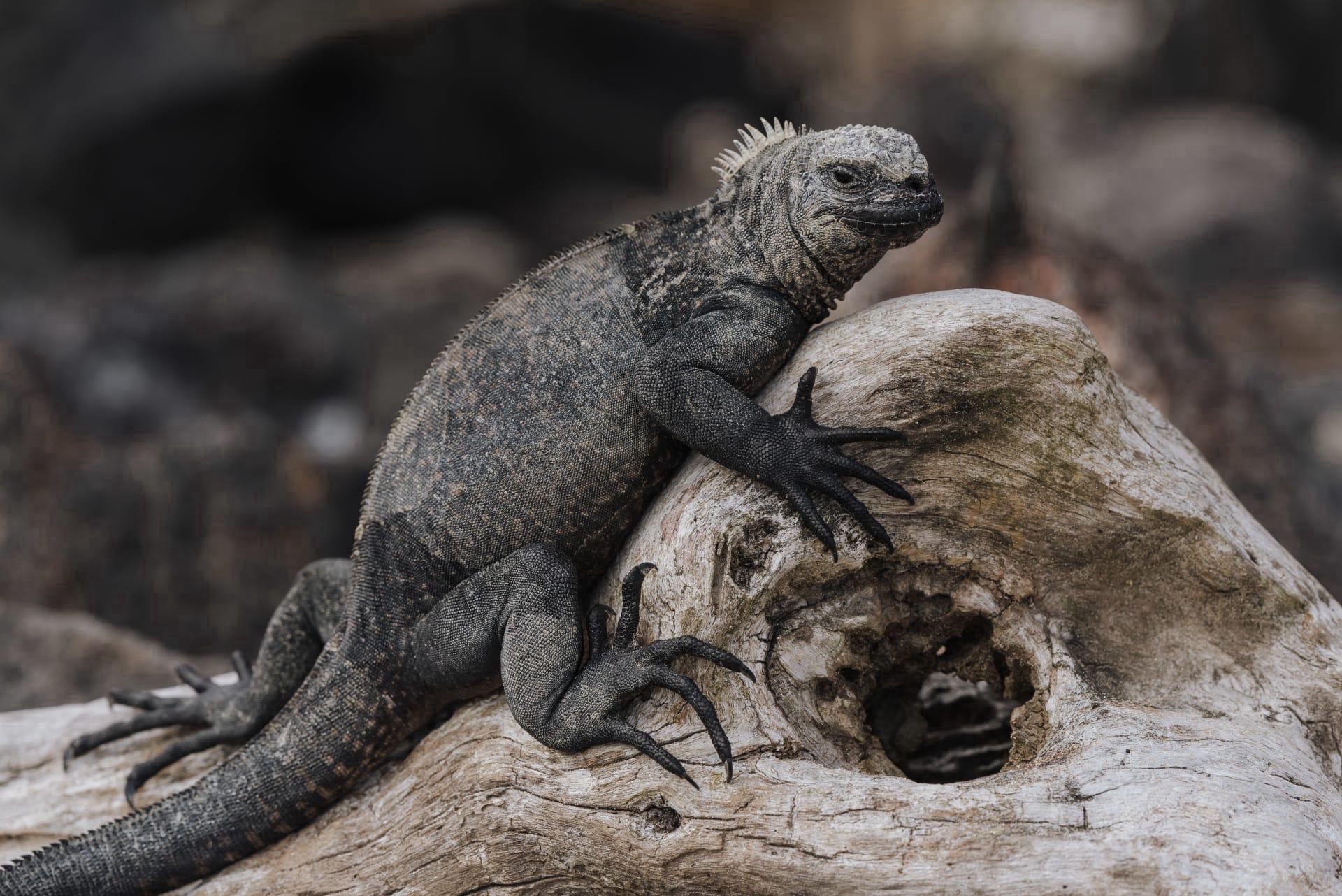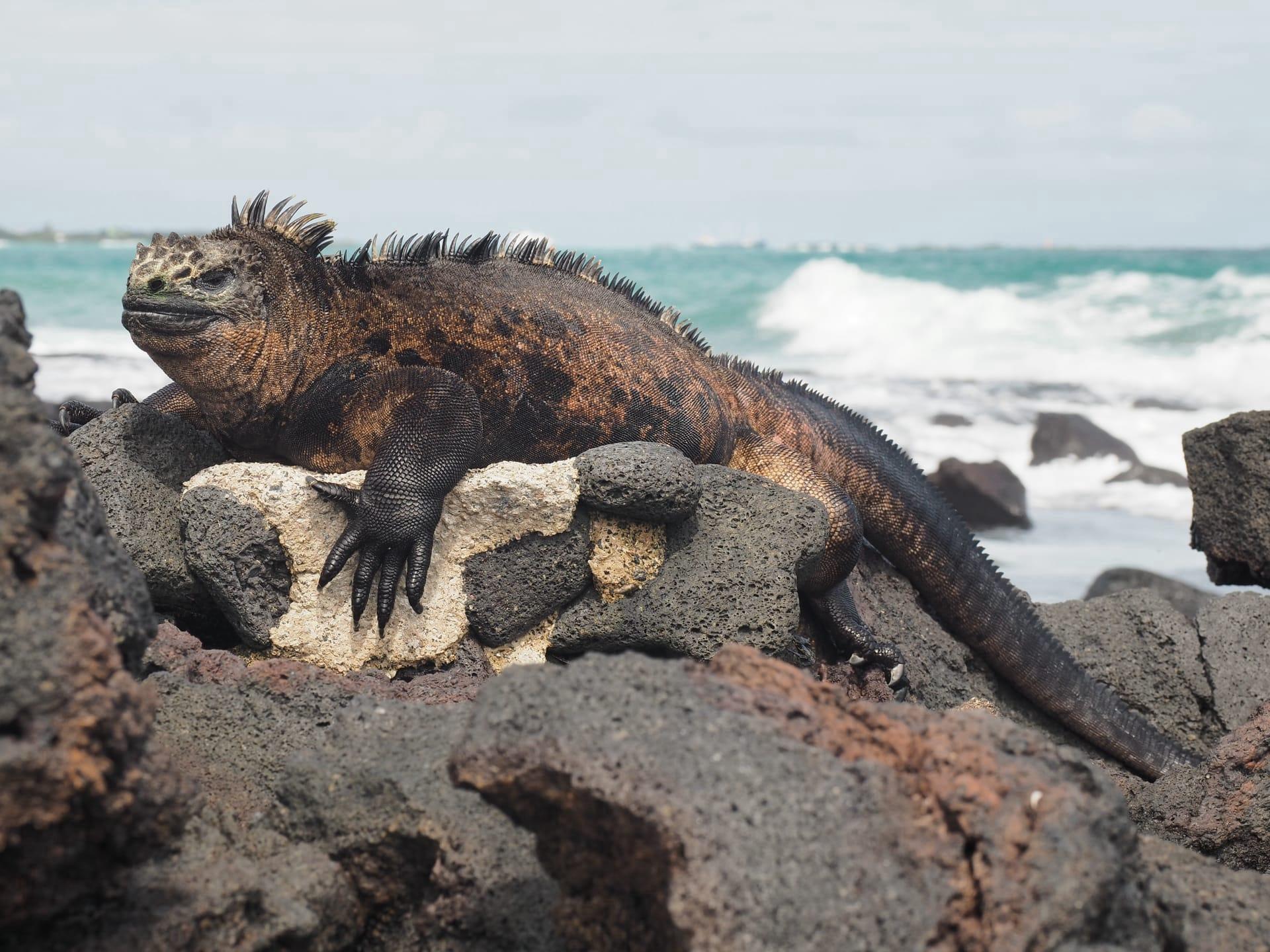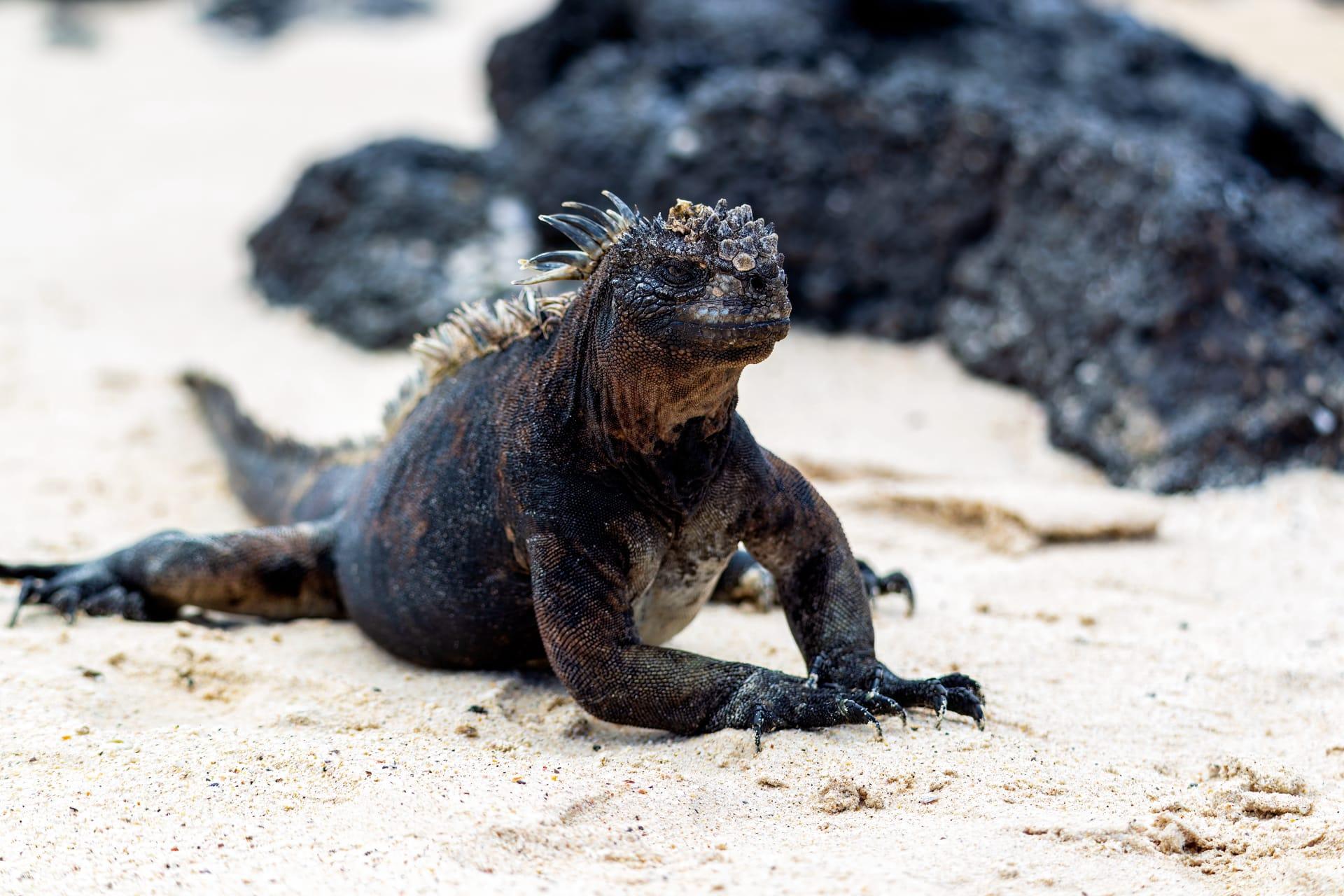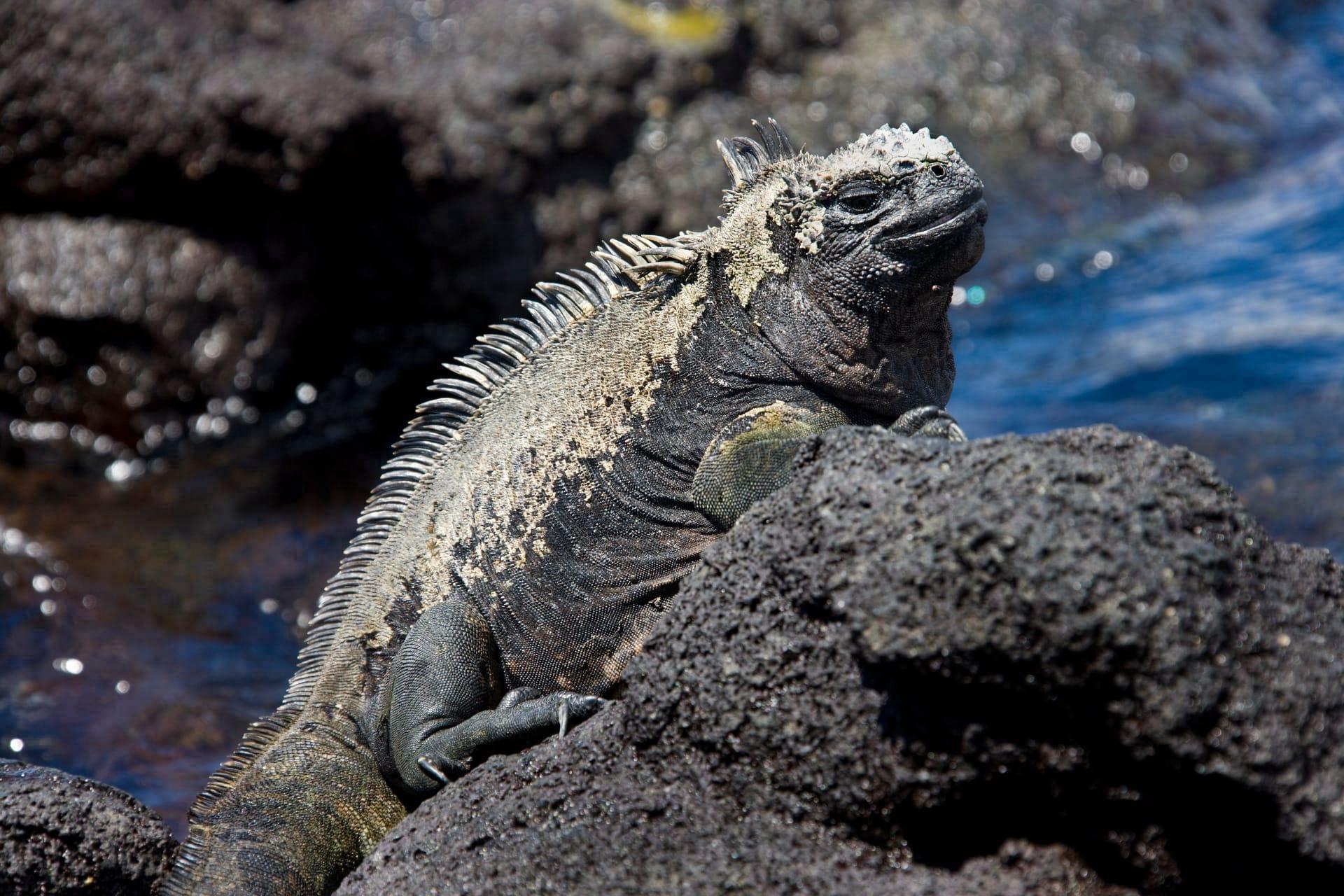Galapagos Marine Iguana
- Home /
- Mini Encyclopedia /
- Animal /
- Galapagos Marine Iguana
1
The Galapagos Marine Iguana, scientifically known as Amblyrhynchus cristatus, belongs to the Iguanidae family, which is a part of the larger Squamata order. This unique species is the only marine lizard on Earth, having adapted over millions of years to thrive in its challenging environment. They have a distinctive look, with a robust body, flattened tail, and spiny dorsal scales. The coloring varies from a uniform black in young iguanas to a red and green hue in adults, especially during mating season. This color variation is not just for show; it's a vital part of their survival, aiding in camouflage and temperature regulation.
Found exclusively in the Galapagos Islands, these marine iguanas are distributed across the archipelago, inhabiting almost all the islands. Their population sizes vary significantly, with estimates ranging from a few hundred to tens of thousands per island. The largest populations are typically found on the islands of Fernandina and Isabela. The iguanas favor rocky coastlines where they can bask in the sun and easily access the ocean for food. They are particularly adapted to the unique marine environment of the Galapagos, which is influenced by several ocean currents bringing a mix of warm and cold waters, affecting the availability of their food sources.

2
Question: Do Galapagos Marine Iguanas drink seawater?
Answer: A common misconception about the Galapagos Marine Iguana is that they cannot drink seawater. In reality, these remarkable reptiles have developed an extraordinary adaptation to their saline environment. They do drink seawater, but they have special glands in their nasal passages that filter out the salt. After ingesting seawater, they expel the excess salt through these nasal glands, often seen as a sneezing action, which results in the characteristic white 'salt' patches seen on their heads. This adaptation allows them to stay hydrated and maintain a balance of salt in their bodies, crucial for their survival in the salty ocean environment where fresh water is scarce.

3
The survival strategy of the Galapagos Marine Iguana is as unique as its habitat. Primarily herbivorous, these iguanas have adapted to feed almost exclusively on algae and seaweed, which they graze from the rocky sea bottom. During low tide, they can be seen foraging along the shoreline, but they are also excellent swimmers and can dive to depths of up to 30 feet to find food. Their flattened tails aid in swimming, while their sharp claws help them cling onto rocks against strong ocean currents.
Their dark coloration isn’t just for camouflage; it also helps in thermoregulation. After a cold swim, they bask on the volcanic rocks to absorb heat and raise their body temperature, which is vital for their metabolism and digestion.

4
In the Galapagos ecosystem, the Marine Iguana plays a critical role. By feeding on algae, they help control the growth of these plants, ensuring a healthy balance in the marine ecosystem. This grazing activity promotes the growth of younger, healthier algae, which in turn supports a variety of marine life. Their presence also impacts the terrestrial ecosystem. As they excrete waste, they contribute nutrients that support island plant life, indirectly aiding other land-dwelling creatures. Their role as prey is equally important. They provide a food source for Galapagos hawks and other predators, playing a part in the food web of the islands.
The impact of the Marine Iguana on the Galapagos Islands extends beyond just the biological. They are a symbol of the unique wildlife of the archipelago and play a significant role in ecotourism. Their distinct characteristics and behaviors draw scientists and tourists alike, contributing to the islands' economy and aiding conservation efforts. By attracting attention to the Galapagos, these iguanas indirectly promote the protection of their habitat and other endemic species.

5
Film: "Galapagos: The Islands That Changed the World" is a BBC nature documentary series released in 2006. This documentary showcases the diverse wildlife and unique environments of the Galapagos Islands, including the Marine Iguana. It offers stunning visuals and insights into how these creatures have adapted to their harsh, volcanic surroundings.
Book: "The Galapagos: A Natural History" by Henry Nicholls, published in 2014, delves into the fascinating world of Galapagos wildlife. This book includes a detailed account of the Marine Iguana, discussing its evolution, behavior, and the challenges it faces in a changing world. Nicholls combines scientific research with engaging storytelling, making it a compelling read for anyone interested in natural history.
Book: "Island Life: A Natural History of the Islands of the World" by David Quammen, first published in 1996, explores the unique ecosystems of islands, including the Galapagos. Quammen's book offers a comprehensive look at the Marine Iguana's role in the Galapagos ecosystem, examining how isolation and environmental factors have shaped its unique adaptations. This work is a blend of scientific inquiry and narrative, providing a deeper understanding of island ecology.